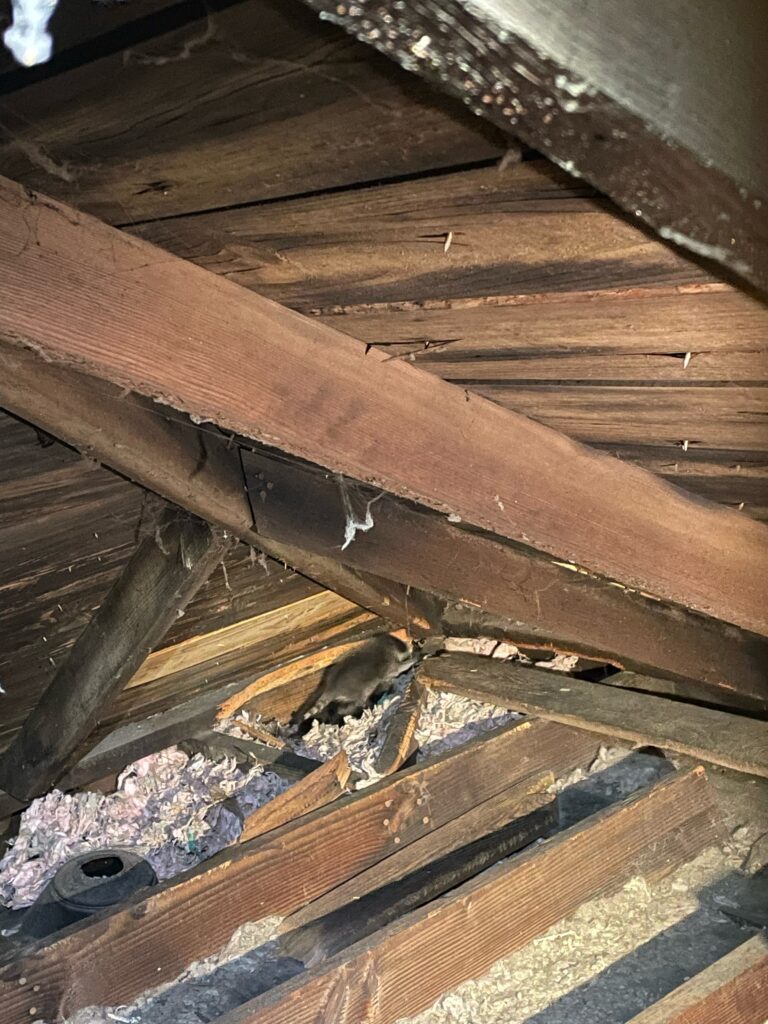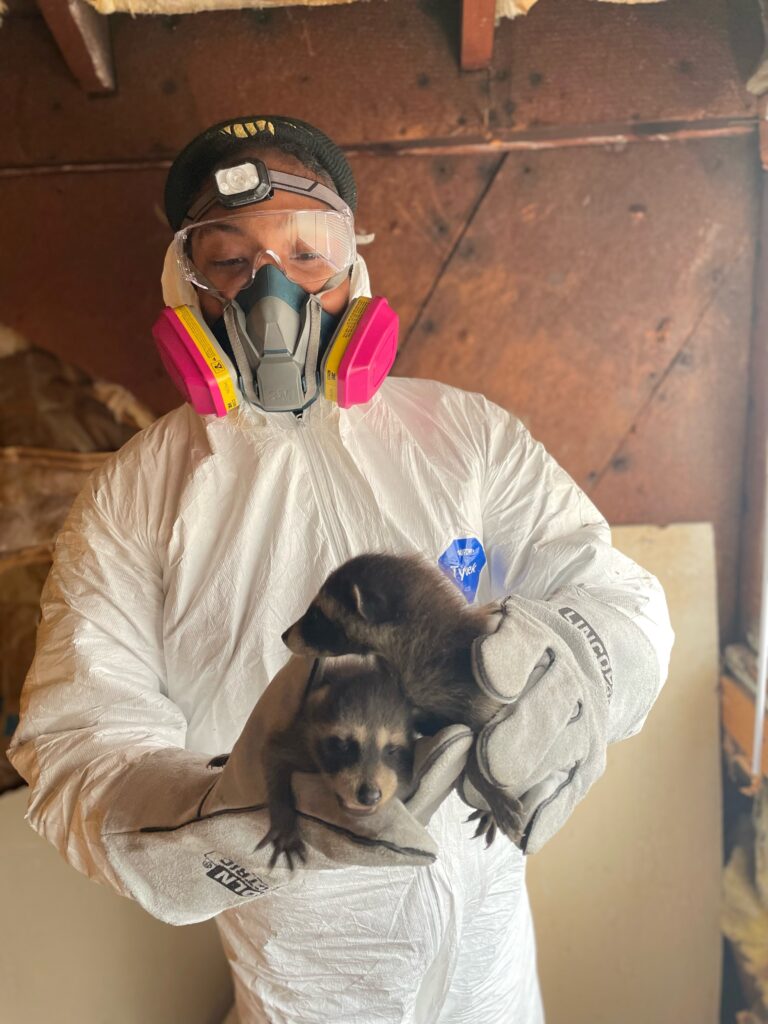Raccoons tend to seek shelter in attics during certain times of the year, typically in late winter to early spring when they are looking for safe and warm places to nest and raise their young. Raccoons give birth from March through June, and litters average two to four pups.
In Chicago, this could mean anywhere from late January through April. However, it’s worth noting that raccoon behavior can vary depending on factors like weather conditions, food availability, and urban development. If you suspect raccoons have entered your attic, it’s essential to address the situation promptly to prevent damage and ensure your safety. Consider contacting a local wildlife removal expert for assistance.
Juvenile Raccoons in Attic
Baby raccoons, also known as kits, can produce various noises in an attic that range from high-pitched whimpers to soft chirps and muffled cries. Their vocalizations can be quite distinct, often resembling a combination of whining and chittering sounds. These noises may increase in intensity and frequency when the kits are hungry, distressed, or communicating with their mother. Additionally, the scratching and scampering of their tiny feet against the attic floor or walls may accompany their vocalizations, indicating their presence and activity within the space.

Baby raccoons look very similar to adults, the only difference being their size. Newborns do not open their eyes until their third week of life, so they are dependent on their mothers. Even after baby raccoons have grown large enough to run, climb, and forage for food on their own, they stay with their mothers for about a year.
Raccoon Trap in Attic
Live traps are the most effective and humane way to remove a raccoon from a property. We set and baited the traps to capture a raccoon but limited the possibilities of catching a non-target species.

Raccoon Removal from Attic

Exclusion repairs are the most effective raccoon control. Some of the most common damage repairs include chimney caps, roof vents, and shingles. After raccoon removal, we seal all entry points with material to block all potential raccoon entry points. Once the house is protected from raccoon infestations, we apply sanitization and ectoparasite agents to mitigate the raccoon damage in your house.
How Raccoons Get into Your Attic
Raccoons are excellent climbers. They use tree limbs, downspouts, or even siding to gain access to your roof. Once on your roof, entry points include shingles, loose soffits, eaves, vents, or roof returns. Raccoons can take a small entry hole and create a bigger one. Once raccoons are trapped and removed, you need to seal all current and potential entry points for long-lasting raccoon control.
Raccoon Removal from Attic
Even though baby raccoons look cute and cuddly, they will still bite and scratch. Raccoons are not born with rabies but instead exposed to the disease at birth by the mother as she grooms the newborn. Do not keep raccoons as pets! Critter Control of Chicago provides humane raccoon removal that focuses on keeping people and animals safe.